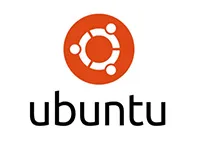I have a bash script that I want to dockerize but I’m having issues with both the ENTRYPOINT and CMD directives.
Here’s my Dockerfile:
FROM ubuntu:22.04
# NOTE: these can be overridden with `--build-arg KEY=VALUE`
ARG ...
WORKDIR /scripts
COPY . .
# Install required packages
RUN ...
# Make sure the script is executable
RUN chmod a+x my-script.sh
# Set the entrypoint to use bash
ENTRYPOINT [ "bash" ]
# Run the script
CMD [ "my-script.sh", "-u", $URL, "-k", $KEY, "-d", $DEBUG ]
I’ve done a few iterations and I kept getting different kind of errors. I’ve already deleted the images that I built and the containers so I don’t have the errors to share.
Basically, I want to build an image that would run my bash script when I start a container using that image. I already saw What is the difference between CMD and ENTRYPOINT in a Dockerfile? but I’m still left confused on how to properly use these two directives.

 Question posted in
Question posted in 

2
Answers
Imagine that it will be executed like:
It can have many different presentation but in your specific example, it should be
Therefore
Make sure the first line of the script has a correct "shebang" line.
Make sure the script is executable on the host system.
Put the entire command line in (preferably)
CMD. Don’t explicitly say "bash" anywhere.Especially avoid the pattern you show of naming only the interpreter in the
ENTRYPOINT. If you want to run an alternate command, you still need to type out the entire command, but it must be a shell script or else it won’t run (docker run --rm your-image ls -lwill fail as you’ve shown it, for example). There’s an argument to make the script itself be theENTRYPOINTand theCMDbe only the arguments.The approach I generally take is that
CMDis a complete command on its own. There is a useful pattern of havingENTRYPOINTbe a wrapper script that does some first-time setup and then ends inexec "$@"to run theCMD. There are also some interesting use cases of replacing the command at container start time (for debugging; to run a Web server and background worker off the same code base) andCMDis a little easier to override when you need to.